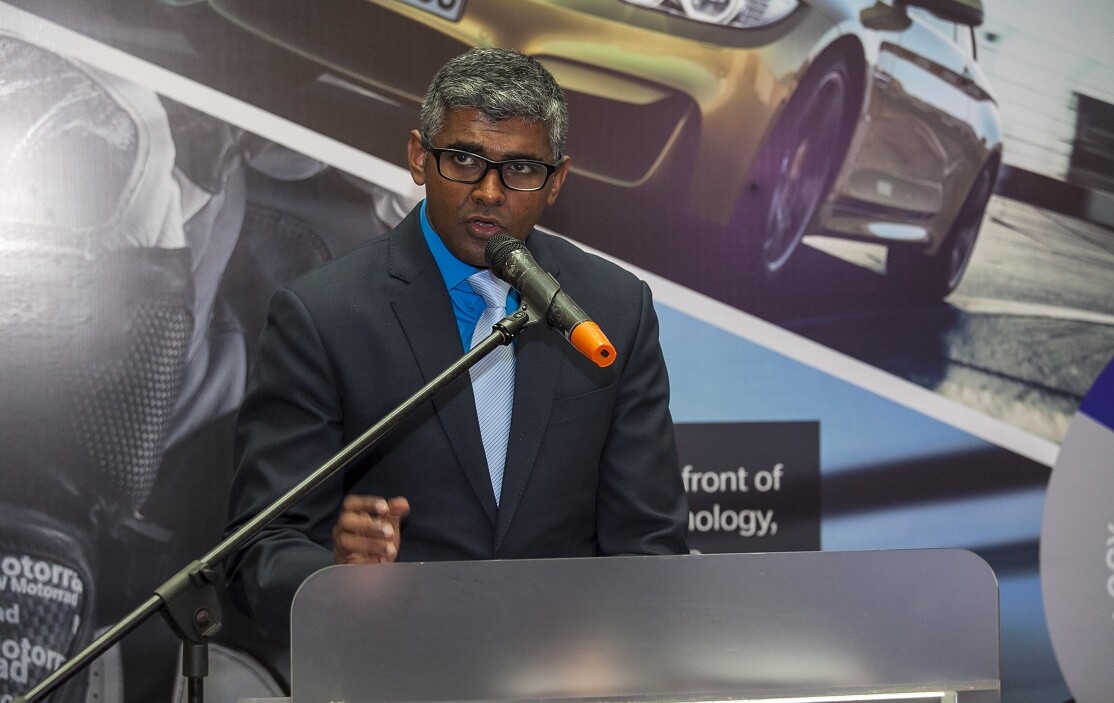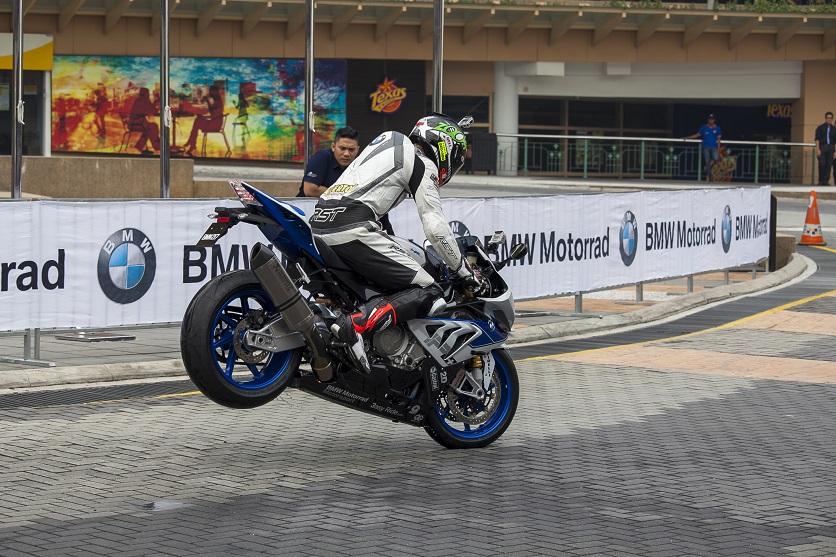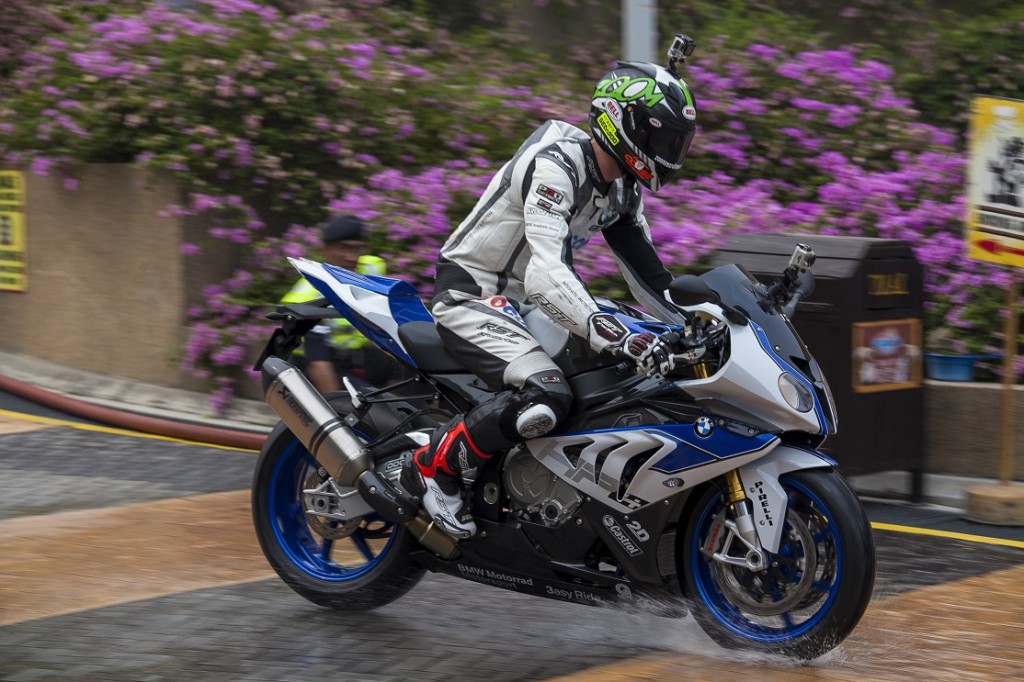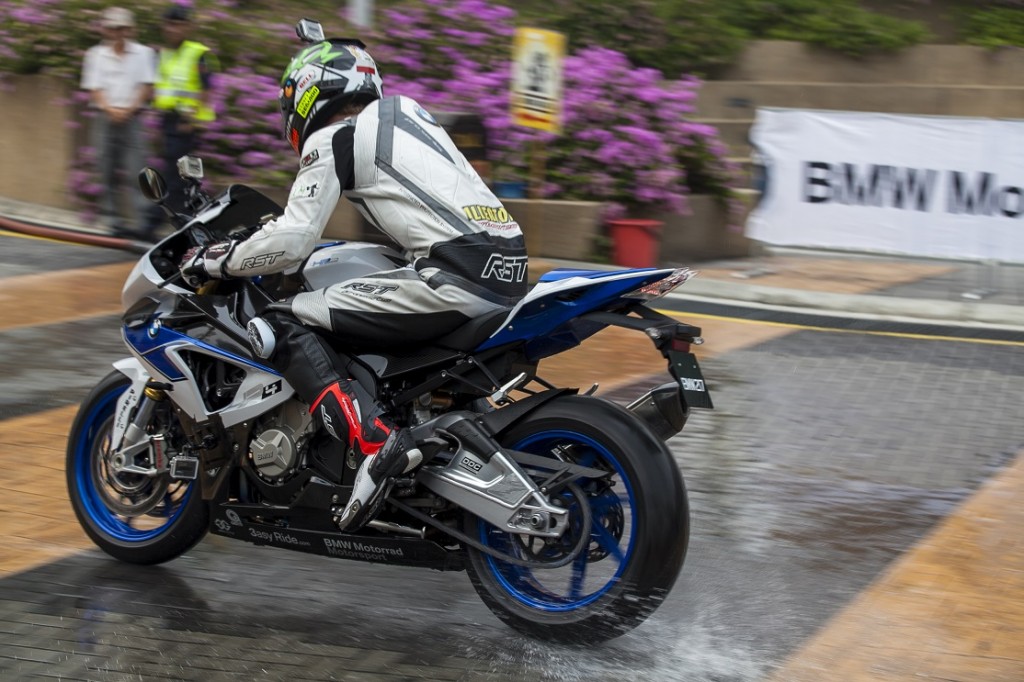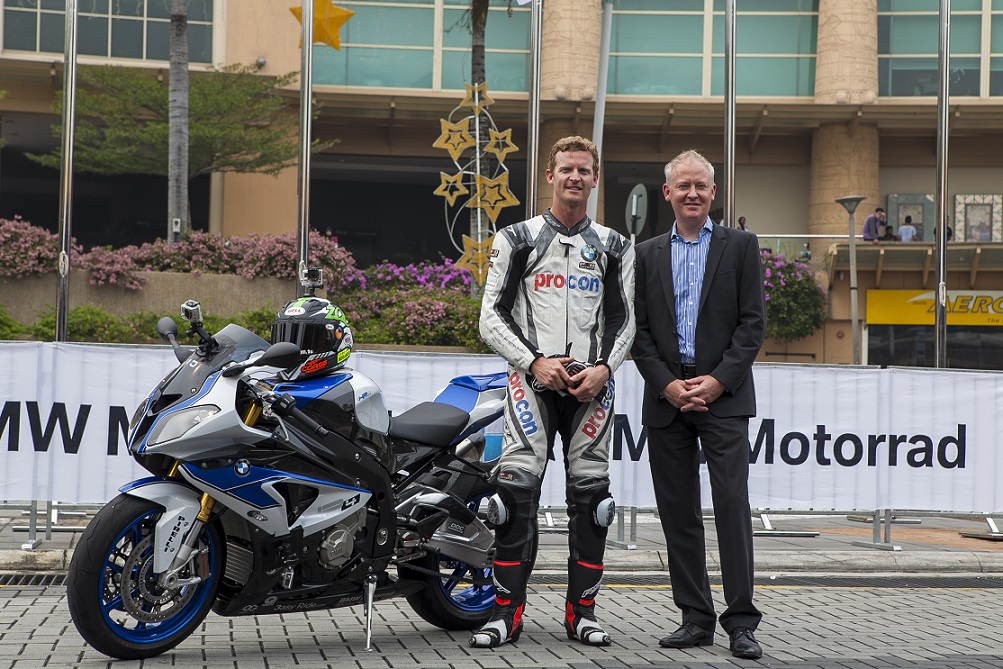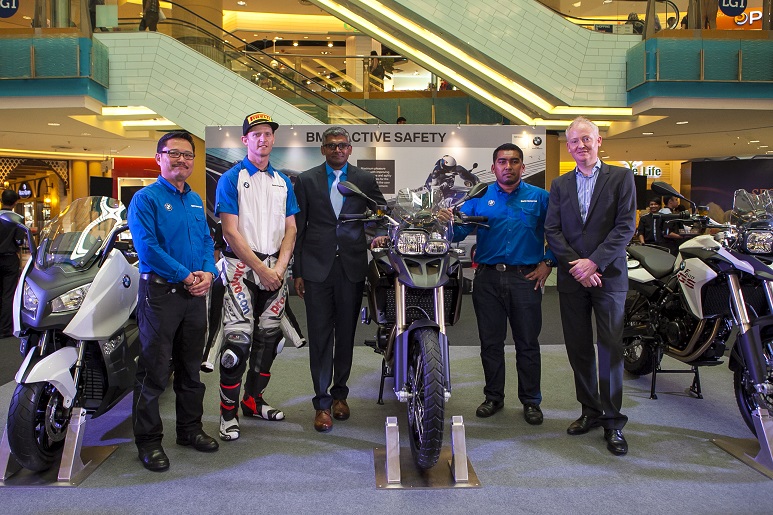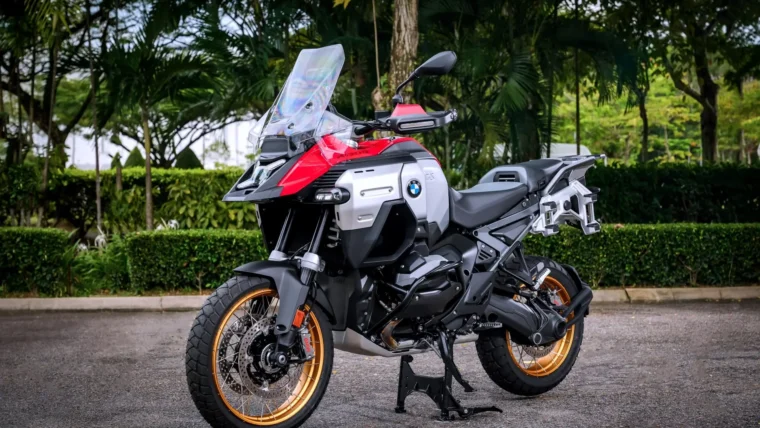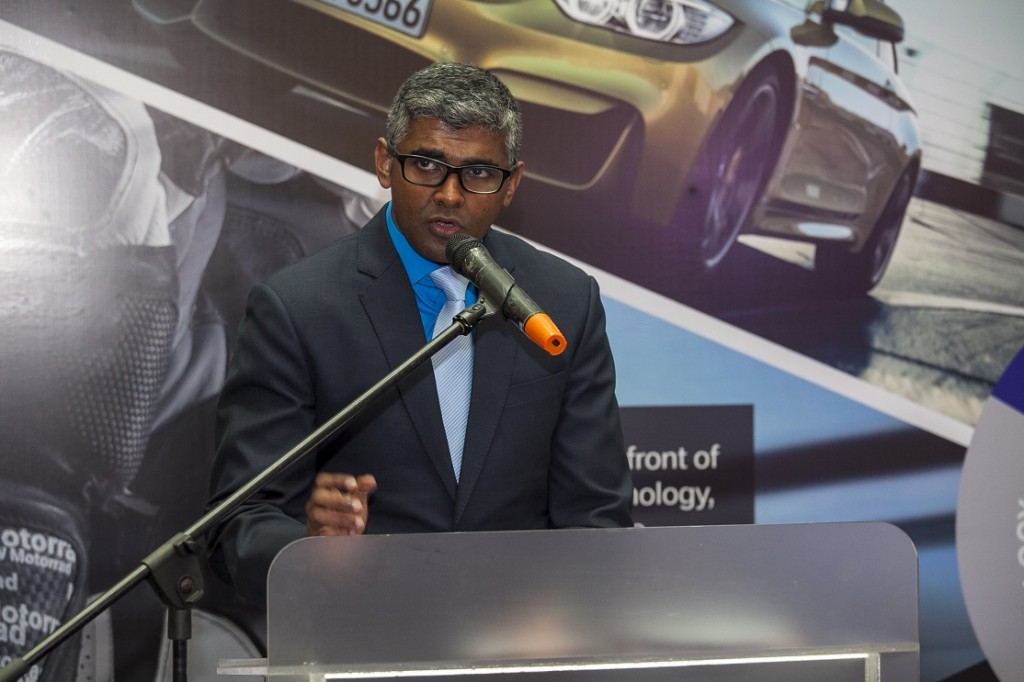
BMW Group Malaysia hosted an exhibition last weekend at Sunway Pyramid with the objective of creating greater awareness for the importance of Active Safety in cars and motorcycles.
The BMW Active Safety showcase demonstrated the premium automaker’s integrated approach to vehicle safety with a special focus on the BMW Group’s “Safety 360°” principle which outlines the importance of the Vehicle, Technology and Equipment as well as Training in ensuring safety on the road.
Opening the BMW Active Safety exhibition, Sashi Ambi, Head of Corporate Communications, BMW Group Malaysia said, “We at BMW believe that safety and responsibility on the road is very much essential to the experience of Sheer Driving Pleasure and we have worked continuously to develop innovative solutions and new ideas to further enhance road safety which has been firmly anchored within our corporate strategy.”
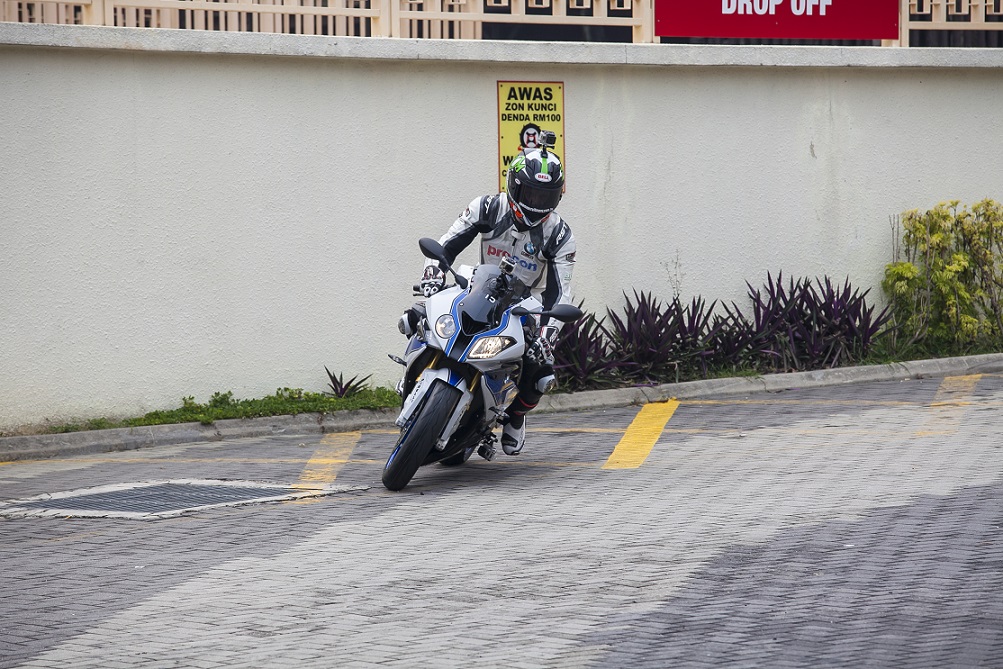
Ambi added that with the rise of road traffic accidents in the country year on year, Malaysians should seek and urge for safety technologies in their vehicles to make them safer. Ambi said, “The presence of safety technologies and features should be one of, if not the main decision factor when purchasing a car or motorcycle here. Often, this criteria is overlooked in place of other criteria such as competitive pricing. This should not be the case as this is the cost that you are placing on your life.”
A recent study by the University of Michigan listed Malaysia as the 17th most dangerous country in the world for road users with 30 fatalities per 100, 000 individuals. The study also highlighted that Malaysia is second only to Thailand in terms of road fatalities in the South East Asian Region. Further to this study, the World Health Ranking 2011 ranked Malaysia at number 20 in terms of countries with the most death caused by road accidents.
Meanwhile, the Malaysian Institute of Road Safety Research (MIROS) recently cited that an average of 18 people are killed on Malaysian roads on a daily basis and this figure is predicted to rise to 29 people by the year 2020. The percentage of killed and seriously injured motorist have also increased dramatically by 80% from the year 2001 to 2013, further demonstrating the seriousness of the need for road safety in the country.
As the Malaysian government aims to see a 50% reduction in road fatalities by the year 2020, a need for rigorous effort to reduce the number is especially imperative particularly when 19.4% of these fatal crash collissions are caused by motorcycles going out of control. Accidents involving motorcycles account for 60% of the total number of deaths whilst car drivers and passengers account for over 25% of deaths in road fatalities in Malaysia. (Source: Malaysian Road Safety Department.)
In 2007, the number of fatalities in German road traffic, for example, was lower than ever, amounting to 4,949 according to the German Federal Office of Statistics. This trend has been continuing for a long time and it is important to note that motorcycle ABS have always been identified by safety experts as the safety technology with the highest accident reduction potential for motorcycles available today. In 2008, the German Federal Highway Research Institute reported a 12.1% decrease in road fatalities as a result from ABS application in motorcycles. It is for this reason that with the increasing number of fatalities for Malaysian motorcyclists that the government must now more than ever understand that two-wheeler accidents can be prevented by fitting ABS as a safety standard in all motorcycles.
BMW Safety 360°: riding fun starts with a sense of safety.
The BMW Motorrad “Safety 360º” principle adopts a universal perspective and breaks down the topic into three facets – safety technology in the vehicle itself, safety derived from rider equipment, as well as safety derived from rider training. Focusing on better implementation of ABS as a safety standard, the BMW Active Safety showcase highlights the benefits and necessity of this assistance system as indicated in a German study on ABS for motorcycles which concluded that 93% of cases where the motorcyclist fell of the vehicles due to sudden braking could have been avoided with ABS, or at the very least reduced the severity of the accident.
As the lightest and most intelligent anti-lock braking system, ABS provides assistance for riders in ensuring that the motorcycle can be intuitively controlled even when extreme braking manoeuvres are performed. The highly sophisticated brake system prevents the wheel from locking and therefore allows the motorcycle to be within complete control of its rider even when full force of braking power is applied. Whenever the system senses that a wheel is locked or almost locked, it momentarily reduces the brake force, allowing the wheel to rotate in a controlled way. This precise regulation of the braking pressure on the individual wheels ensures that the motorcycle can always be steered easily regardless of the road surface’s friction coefficient and the applied brake pressure. All these are done with such remarkable speed and smoothness that both braking and steering are simultaneously effective throughout the braking process.
BMW Motorrad was the first to mass produce motorcycles with ABS and with its introduction of the world’s first motorcycle serial production with this technology, ABS has since remained as the most effective safety assistance system for safer motorcycling. BMW Motorrad once again took action for its riders and became the first manufacturer in the world to equip all of its new models with ABS as standard in 2013, setting yet another milestone in active motorcycling safety at the time. Nevertheless, in the course of ABS development and with an aim to take ride safety even further, BMW Motorrad has also created traction slip control systems such as Dynamic Traction Control (DTC), which works with banking position measurements to make extreme braking manoeuvres safer. In addition to comparing the rotational speeds of the front and rear wheels via the ABS sensors, the sensor box is made available to determine the motorcycle’s banking angle as an additional parameter.
In the second facet of the “Safety 360º” principle, BMW Motorrad has set an absolute benchmark in terms of safety, fit and function for rider equipment by being the only motorcycle manufacturer to develop an entire range of rider equipment from motorcycle helmets to rider suits, boots and gloves since the 1970s. For optimum protection and functionality, all BMW Motorrad System helmets for example have an Expanded Polystyrene (EPS) inner shell made of foamed polystyrene with varying material densities and can be adapted to individual ergonomic needs by means of various cheek and neck pads. All BMW Motorrad helmets also have an additional neck strap which keeps the helmet securely in place and features an integrated sun visor and dual visor as standard.
In addition to its internally developed motorcycle helmet, BMW Motorrad has also developed rider suits, jackets and trousers according to BMW Motorrad’s own seal of quality, “Concept of Advance Rider Equipment” (C.A.R.E.). An all-weather suit such as the BMW Motorrad’s TourShell which was designed to be wind and waterproof increases a rider’s safety as it is made from highly abrasion-resistant material, preventing the upper material from absorbing too much water thus reducing the weight of the suit. BMW Motorrad suits are also designed with flexible, removable NP protectors with excellent damping properties, a removable, quilted thermal inner jacket as well as safety-optimised boots and gloves. BMW Motorrad also developed the Neck Brace System as part of its extensive range of rider equipment which perfectly supports passive riding safety.
Meanwhile, initial and further training of motorcyclists are emphasised in the third facet of the “Safety 360º” principle as BMW Motorrad believes that riders with higher skill level ride more safely. Available for all types of motorcycling, BMW Motorrad offers rider training courses in the areas of off-road, safety and race track under the guidance of certified instructors. These training courses not only ensure that riders learn the right way of safe riding but also the best way to maximize their riding pleasure.
“As a pioneer in the area of safety, we at BMW believe that it is our social responsibility to ensure all BMW customers benefit from existing technologies. While there are now a whole series of safety systems which do just this, we firmly believe that ABS technology is first and foremost the most logical step towards ensuring the safety of our riders. The European Union Law for example mandates all newly registered motorcycles to be fitted with ABS by 2016, and this should be a clear direction for motorcycle manufacturers as well as legislative authorities to make ABS technology a safety standard. After all, riding safety means riding pleasure as well,” said Ambi.
BMW Active Safety: precise suspension control, driving control systems and driver assistance systems.
Safety is not a question of individual systems. Rather, safety is always a complete, all-round package. In an effort to prevent an accident right from the start, the BMW Active Safety also highlights the benefits of a wide range of existing measures and technologies such as those in BMW cars. These features include precise suspension control, driving control systems and driver assistance systems, all which contribute to superior driving safety.
A car’s chassis for example, must be sophisticated and appropriately designed with an overall chassis concept to allow a comprehensive active system to function. Built with a chassis which is ideal in delivering exemplary driving qualities and supported by control systems which handles particularly dynamic situations with ease and appropriate care, all these allow the driver to remain in full control of his or her car even in an emergency.
In addition to precise suspension control and driving control systems, driver assistance systems is equally important as the effects and contributions of these systems enhances safety to an over proportional extent when linked with one another. Dynamic Stability Control (DSC) in a BMW car for example, serves first and foremost to stabilise the vehicle when driven to its limit, thus preventing the car from swerving out of control particularly during abrupt manoeuvres. When DSC sensors interacts with Active Steering, this intelligent technology prevents the car from swerving out of control by intervening appropriately in the steering.
Apart from the constant enhancement of active safety systems, BMW also places much emphasis on offering the driver behind the wheel with the right kind of training and practice. More than 30 years ago, BMW implemented the BMW Driver Training program to provide a truly safe experience of sheer driving pleasure by teaching the driver how to behave at the wheel; how to understand and appreciate the limits to technology; how to hone his or her driving skills; as well as how to identify, avoid and handle hazards. The BMW Driver Training program has been an annual event in Malaysia since the year 2007. Each year, BMW Group Malaysia organises six programs of the BMW Advanced Driver Training program and one program of the BMW Intensive Driver Training program in the country.
“We at BMW have always put great significance on road safety in terms of technology and training. To this day, every single safety system in our cars is examined and is developed by BMW engineers – most of which often take on pioneering roles. Nevertheless, there is still great potential for further development in active safety systems as supreme safety of the highest standard should be a natural asset for any carmaker,” said Ambi.
Other posts by AF Newsdesk

